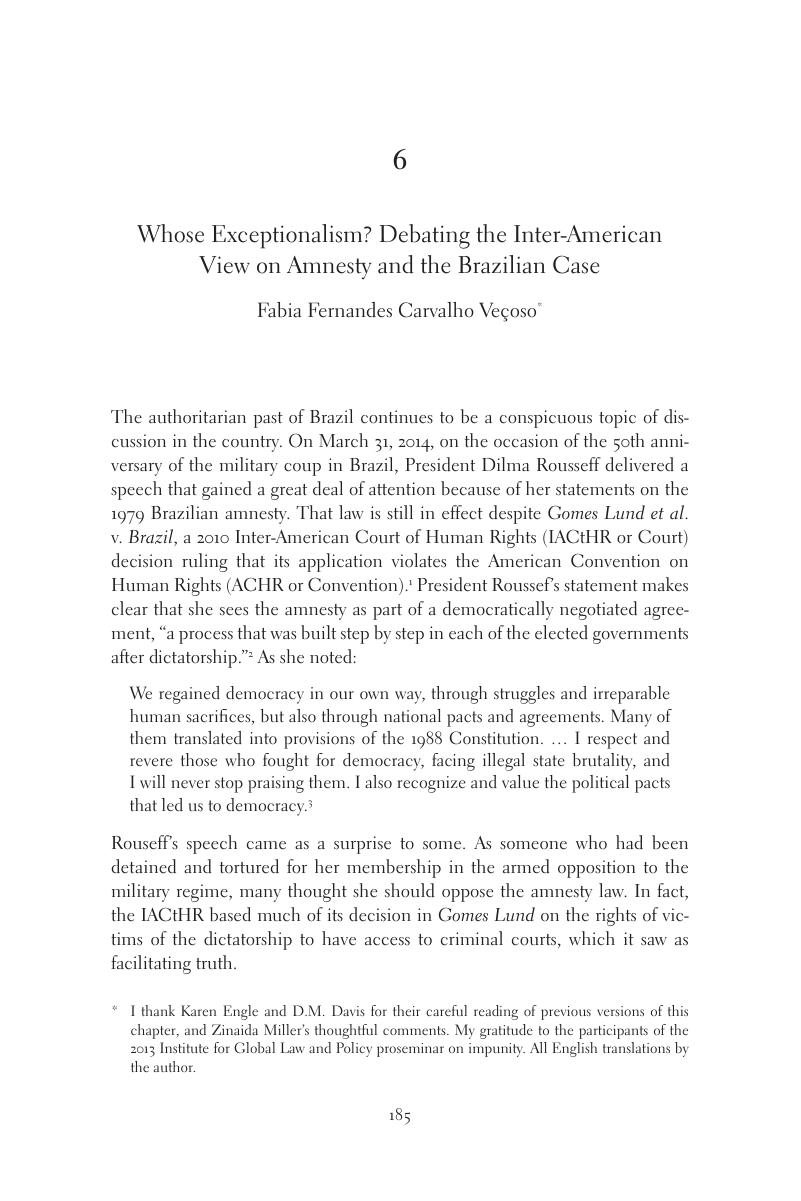Book contents
- Anti-Impunity and the Human Rights Agenda
- Anti-Impunity and the Human Rights Agenda
- Copyright page
- Contents
- Contributors
- Acknowledgments
- Introduction
- Part I What does Anti-Impunity Mean?
- Part II How and Where does Anti-Impunity Operate?
- 4 The South African Truth Commission and the AZAPO Case: A Reflection Almost Two Decades Later
- 5 Anti-Impunity Politics in Post-Genocide Rwanda
- 6 Whose Exceptionalism? Debating the Inter-American View on Amnesty and the Brazilian Case
- 7 The Distributive Politics of Impunity and Anti-Impunity: Lessons from Four Decades of Colombian Peace Negotiations
- 8 From Political Repression to Torturer Impunity: The Narrowing of Filártiga v. Peña-Irala
- Part III Are there Alternatives to Anti-Impunity?
- Index
6 - Whose Exceptionalism? Debating the Inter-American View on Amnesty and the Brazilian Case
from Part II - How and Where does Anti-Impunity Operate?
Published online by Cambridge University Press: 19 January 2017
- Anti-Impunity and the Human Rights Agenda
- Anti-Impunity and the Human Rights Agenda
- Copyright page
- Contents
- Contributors
- Acknowledgments
- Introduction
- Part I What does Anti-Impunity Mean?
- Part II How and Where does Anti-Impunity Operate?
- 4 The South African Truth Commission and the AZAPO Case: A Reflection Almost Two Decades Later
- 5 Anti-Impunity Politics in Post-Genocide Rwanda
- 6 Whose Exceptionalism? Debating the Inter-American View on Amnesty and the Brazilian Case
- 7 The Distributive Politics of Impunity and Anti-Impunity: Lessons from Four Decades of Colombian Peace Negotiations
- 8 From Political Repression to Torturer Impunity: The Narrowing of Filártiga v. Peña-Irala
- Part III Are there Alternatives to Anti-Impunity?
- Index
Summary

- Type
- Chapter
- Information
- Anti-Impunity and the Human Rights Agenda , pp. 185 - 215Publisher: Cambridge University PressPrint publication year: 2016
- 1
- Cited by

